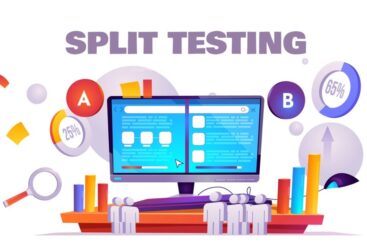In the ever-evolving landscape of digital marketing and communication, the art of persuasive copywriting has emerged as an indispensable tool. It’s the art of weaving words and phrases together to do more than just convey information; it’s the art of convincing, influencing, and ultimately driving readers to take specific actions. Whether you want to sell a product, promote a service, encourage social sharing, or rally support for a cause, persuasive copywriting can be your most potent ally. In this comprehensive guide, we will delve deep into the world of persuasive copywriting, exploring a rich arsenal of techniques and strategies that captivate readers, foster engagement, and, most importantly, convert them into enthusiastic customers and advocates.
The Essence of Persuasive Copywriting
At its core, persuasive copywriting is about using words to convince, motivate, and influence readers to take a particular course of action. This action can range from making a purchase to signing up for a newsletter, sharing content on social media, or supporting a cause. To understand the essence of persuasive copywriting, we must break it down into three essential elements:
- Captivation: The first and crucial challenge is to capture the reader’s attention. In a world awash with information, your copy must stand out, entice the reader, and make them want to keep reading.
- Connection: Once you’ve captured their attention, your copy must create a genuine connection with the reader. It should resonate with their needs, desires, and pain points, making them feel understood, valued, and ultimately, driven to keep reading.
- Conversion: The ultimate goal of persuasive copywriting is to lead the reader to conversion – to motivate them to take the intended action, be it making a purchase or subscribing to a service. This is the moment of truth, and it is where the efficacy of your copywriting is most apparent.
Techniques for Persuasive Copywriting
- Know Your Audience: Effective persuasion begins with a deep understanding of your target audience. Research their demographics, preferences, and pain points. Tailor your copy to speak directly to their unique needs and desires.
- Create a Strong Value Proposition: Your copy must clearly convey the unique value that your product or service offers. It should explain how it addresses the audience’s problems or fulfills their desires better than any competitor.
- Emotion is Key: Emotion is a powerful driver of decision-making. Use your copy to tap into your readers’ emotions by telling stories, using vivid and evocative language, and illustrating how your product or service can make their lives better.
- Leverage Social Proof: People tend to follow the crowd. Use social proof, such as customer testimonials, reviews, or case studies, to demonstrate that others have found value in your offering.
- Employ Scarcity and Urgency: Creating a sense of scarcity or urgency in your copy can motivate readers to act quickly. Phrases like “Limited Time Offer” or “Act Now” can create a sense of urgency that prompts immediate action.
- A/B Testing: Regularly test different versions of your copy to identify what resonates best with your audience. A/B testing allows you to refine your approach and maximize engagement.
- Engaging Headlines: The headline is your first impression. Craft compelling, attention-grabbing headlines that make readers want to delve into the content.
- The Power of Storytelling: Stories have a unique ability to draw readers in and create an emotional connection. Weave narratives into your copy that illustrate the benefits and impact of your product or service.
- Use Persuasive Language: Employ words and phrases that resonate with your audience and create a sense of trust and authority. Power words like “guarantee,” “exclusive,” and “proven” can be particularly effective.
- Address Objections: Anticipate and address potential objections or concerns that readers may have. Transparency and acknowledging potential drawbacks can build trust.
The Call to Action (CTA) as Your Linchpin
The call to action (CTA) is arguably the most critical element in persuasive copywriting. It explicitly instructs the reader on what to do next. Crafting a compelling CTA involves the following strategies:
- Be Clear and Specific: Avoid ambiguity in your CTA. State precisely what action you want the reader to take, whether it’s “Buy Now,” “Subscribe Today,” or “Download Your Free Guide.”
- Highlight the Benefit: Explain the value or benefit the reader will receive by following the CTA. For example, “Join our newsletter for exclusive offers and updates.”
- Use Action-Oriented Language: Action verbs, such as “discover,” “get started,” or “experience,” convey a sense of movement and motivate the reader to act.
- Create a Sense of Urgency: If applicable, instill a sense of urgency or time sensitivity in your CTA. Phrases like “Limited Time Offer” or “Act Now” can drive immediate action.
- Design Matters: The visual presentation of your CTA matters. Use contrasting colors, buttons, or bold fonts to make the CTA stand out on the page.
Conversion Optimization and Testing
The art of persuasive copywriting is not static; it is a journey of continuous improvement. Regularly analyze and test your copy to identify what works best for your audience. Here’s how to optimize and refine your persuasive copy:
- Conversion Funnel Analysis: Map out your conversion funnel, tracking how readers move through the stages from initial engagement to conversion. Identify drop-off points and areas for improvement.
- Heatmaps and User Behavior Analysis: Tools like heatmaps and user behavior analysis can reveal where readers are clicking, scrolling, or abandoning your content. This data can guide improvements.
- A/B Testing: Conduct A/B tests on different elements of your copy, such as headlines, CTAs, or overall content structure. Use the results to refine your approach.
- Feedback and Surveys: Collect feedback from your audience through surveys or direct communication. This valuable input can highlight areas for improvement.
The Role of SEO in Persuasive Copywriting
Search engine optimization (SEO) and persuasive copywriting go hand in hand. Effective SEO ensures that your persuasive copy reaches a broader audience. Here’s how they intersect:
- Keyword Research: Use keyword research to understand what terms your audience is searching for. Incorporate these keywords naturally into your persuasive copy.
- On-Page SEO: Optimize your content for on-page SEO elements, including title tags, meta descriptions, and headings. These elements not only enhance visibility but also make your copy more engaging.
- Quality Content: Search engines favor quality, valuable content. The more engaging and persuasive your content, the more likely it is to rank well.
- Mobile Optimization: With the rise of mobile device usage, ensure that your persuasive copy is mobile-friendly. This enhances user experience and SEO performance.
Measuring Success
The effectiveness of persuasive copywriting can be measured through key performance indicators (KPIs). These include:
- Conversion Rate: The percentage of readers who take the desired action.
- Click-Through Rate (CTR): The proportion of users who click on a CTA or link within your copy.
- Bounce Rate: The percentage of users who leave your page without engaging further.
- Engagement Metrics: Likes, shares, comments, and social media engagement indicate how well your content resonates with your audience.
- ROI: Calculate the return on investment by comparing the cost of your persuasive copywriting efforts to the revenue generated.
Conclusion
The power of Persuasive Copywriting cannot be overstated. It is the engine that drives engagement, conversions, and success in the digital age. Through a combination of emotional resonance, compelling storytelling, strategic language, and effective CTAs, persuasive copywriting serves as the bridge that connects businesses with their audience. By understanding your audience, employing tested techniques, and consistently refining your approach, you can harness the undeniable power of persuasive copywriting to influence, inspire, and convert readers into loyal customers and advocates. The art of persuasive copywriting is an ever-evolving journey, one that requires dedication and a commitment to continual improvement, but it is a journey well worth embarking upon for those who seek to engage and convert readers in the digital realm.











